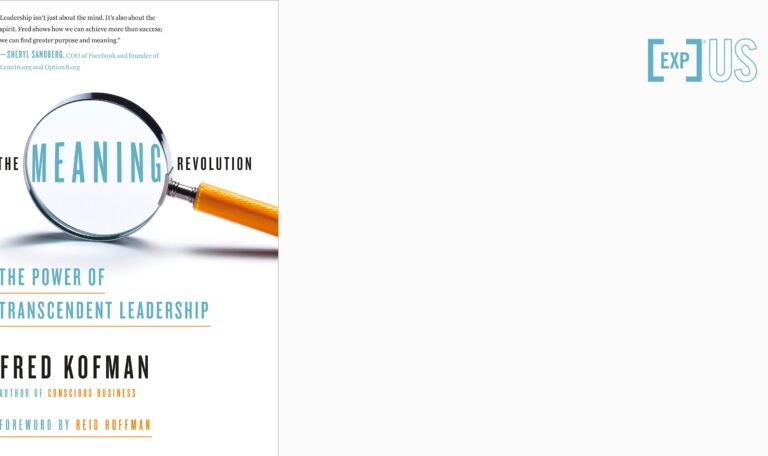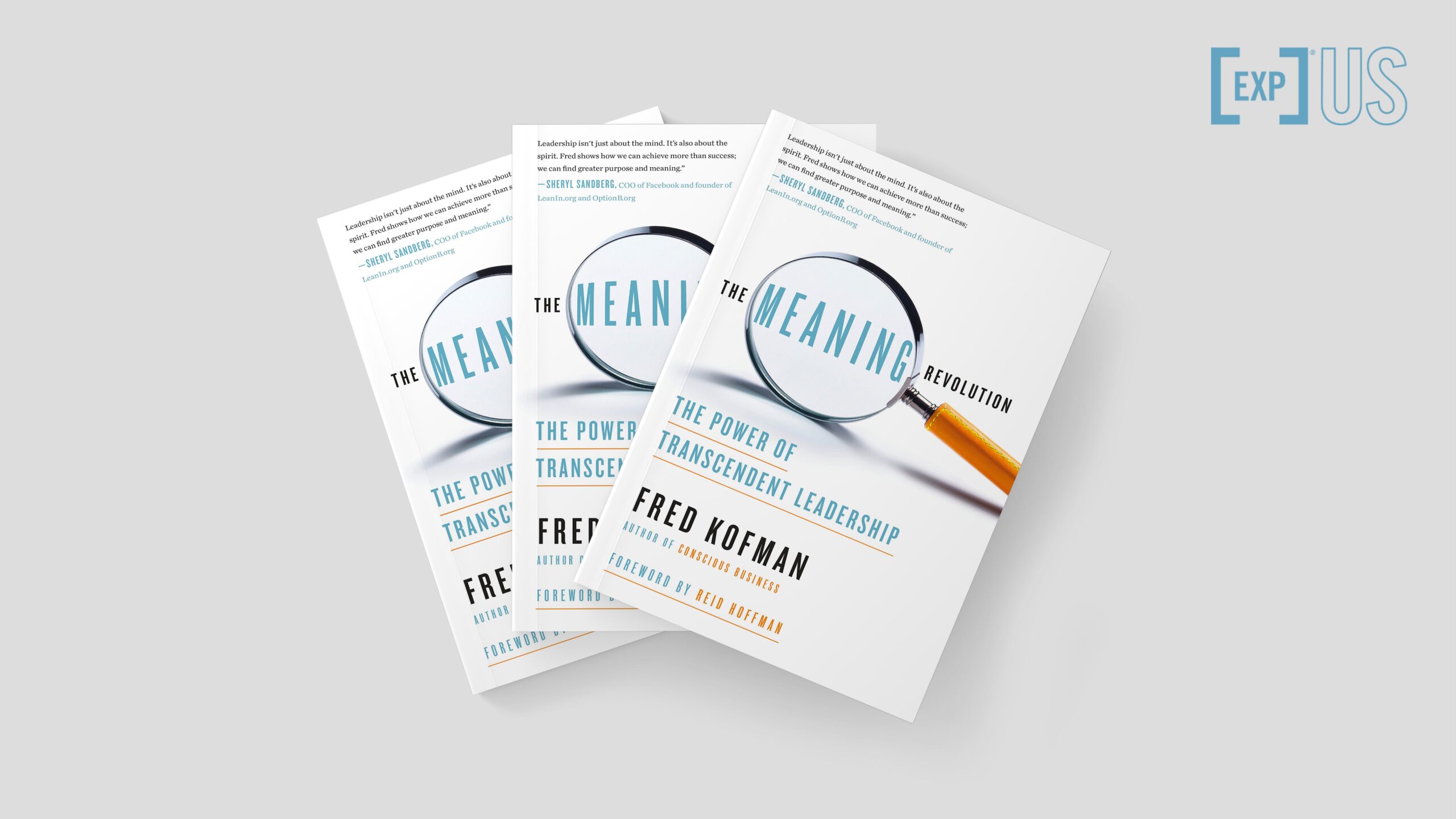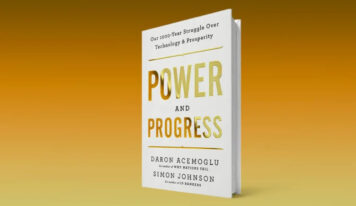Central Ideas:
1- Transcendent leadership rests on the inspirational power of non-material incentives: on employees’ personal sense of purpose, achievement, and esteem, as well as on shared values and ethics, integrating a community;
2- Material exchange, such as wages for service, does not yield more than the right actions. Commitment demands commitment: it can only emerge from an emotional exchange.
3- Taking responsibility as a leader and holding people accountable for their own choices allows people to transform defensive behaviors into creative ones, and feelings of resignation and resentment into enthusiasm and commitment.
4- In collaborative acrimony, the disagreeing parties work together to get a shared narrative that integrates all arguments without hostility. If they cannot reach an agreement after negotiations, they should invite a superior for final arbitration.
5- Being more understanding of others doesn’t just create deeper connections and stronger leaders. It is an agent of transformation of many problems in our world: hunger, misery, suffering, and war.
ABOUT THE AUTHOR:

Fred Kofman is vice president of executive development and leadership at Linkedin. He has a PhD in Economics from the University of California (Berkeley). He was a professor at MIT. He founded the consultancy Axialent, which serves more than 15,000 executives.
Chapter 1 – A hot workshop
As a leader, says Kofman, you don’t want your followers to do what you have said. That’s because you don’t know what they will have to do to help the team win. And even if you wanted them to obey, you would still want them to employ their voluntary efforts and experience to win. You want them to have initiative, to act with intelligence and enthusiasm, to truly reveal opportunities and challenges they see around them, to give their best to the company in line with others. This behavior cannot be extracted by coercion. It must be inspired by enthusiasm and love.
To arouse this internal commitment in your followers, you have to go beyond operational issues, beyond profit and loss. You need to hook into something better and more beautiful: something that all investors would not only support but love and welcome with open hearts. You need your life and the lives of the people around you to truly have a purpose.
To lead a truly successful and enduring company, here’s the message: well-tapped inspiration, born out of a deep understanding and compassion for human nature, is not just a magic little powder that you throw on others to make them feel good. It is a solution to the most arduous problems in business and in today’s societies. It answers the toughest questions: How to reconcile the self-interest of individuals in pursuit of a common goal? How do I get people who are fundamentally interested in their own goals to cooperate with each other in pursuit of a shared purpose? How do I get them to give their best in achieving their individual missions, but also subordinate these missions to a larger one, that of the company, so that everyone wins?
What makes a transcendent leader?
By becoming a transcendent leader, you can address the fundamental problems of incentives and information much, much better than most leaders today. Transcendent leadership rests on the inspirational power of non-material incentives: on the personal sense that employees have of purpose, achievement, and esteem, as well as on shared values and ethics and their desire to join a community. The transcendent leader invites people to join a project that infuses their lives with purpose and meaning.
PART 1 – DIFFICULT PROBLEMS
In this part, the most difficult problems that any leader must solve in his company or team to survive and prosper are presented.
Chapter 2 – Decommitment
In this chapter, the debate is: why people lose their souls in the business world. It explains how a materialistic, produce-receive-consume view of work leaves aside the most important dimensions of human existence. Argument: the worst corporate problems cannot be solved through the one-dimensional world of materialism.
“Even those managers who understand something about human nature and have the best intentions are not such good leaders. This is understandable: while they are well trained in the technical dimension of management, they are poorly trained in the human dimension of it. They don’t know how to deal with beings endowed with a mind of their own. Despite their MBAs and executive education courses, they do not understand how to win hearts and minds.
Because of this, they end up being narrow-minded and narcissistic. They rely on task-oriented directives of order and control, especially in times of stress. They believe that softer skills are of less use than their hard cognitive techniques, which they use as a bulwark against deeper, more introspective ways of working.”
Chapter 3 – Disorganization
In chapter 3, the question is asked: why are companies unable to align their employees in pursuit of a common goal? Three problems are described here: (1) most people feel confused about what their “real” job is; (2) when everyone does their best, the company does not perform at its most satisfactory; and (3) economic incentives created to encourage cooperation work to discourage responsibility and vice versa.
“My guess is that the legal team is tasked with minimizing legal risks, so they are trying to prevent anything from going wrong,” I replied. – Unfortunately, in their zeal to do so, they are preventing things from going right as well.
– You’ve got it all figured out, Fred.
– That’s only half the story, Greg. From their point of view, what they see is that in your eagerness to make the sale, you are neglecting legal risks that could hurt the company.
– So who is right?
– Both are wrong. The goal is neither to minimize risks nor to maximize sales. The goal is to help the company win. That means fulfilling its mission, in an ethical and sustainable way, increasing its economic value, while benefiting its stakeholders.
Chapter 4 – Misinformation
In this chapter, the argument is that nobody really knows the right way to act. It shows how most people falsely assess costs and benefits from their limited perspectives. This leads them to make decisions that hurt the company’s performance. However, even if they overcome this hurdle and try to evaluate the overall impact of alternative courses of action, they still miss the most important piece of information: opportunity has a cost.
“I call this problem ‘misinformation.’ It makes it impossible for one person to work in concert with others in pursuit of a larger corporate goal – even if everyone agrees on the goal. The problem of ‘disorganization’ leads people to search for their local key performance indicators, misaligning them from a common goal. With ‘misinformation’, they are aligned on the common goal but disagree on the best strategy to achieve it. This is because they can only see a fraction of the possible impact their actions could have on the overall goal, so they don’t know how their actions will affect other parts of the company. While they can see only the opportunities and risks that appear in their sphere, they have no idea what opportunities and risks exist elsewhere.”
Chapter 5 – Disillusionment
With this chapter, a three-part warning is issued to those embarking on the path of transcendent leadership: (1) what you do speaks so loudly that people in your company will not listen to what you say; (2) people will become supersensitive and overcritical: no matter how hard you try to act on what you preach, they will always find you deficient; (3) power corrupts: the more you inspire people, the more likely you will betray them. If you fall into any of these three traps, you will poison the very culture you are trying to foster.
“How would you feel if you thought your company wanted to foster your commitment in order to exploit you? How would you react to a program that tried to create a positive work environment so that you would yield more as a ‘human’ resource? Would you feel engaged or enraged? Everyone to whom I have asked this question hangs toward the latter option. This reasoning sounds selfish and objectifying. Even in corporate circles, people tend to find it manipulative. Material exchanges, such as wages for service, yield no more than correct actions. Commitment demands commitment: it can only emerge from an emotional exchange.”
PART 2 – SOFT SOLUTIONS
Part 2 offers “soft”, people-centered solutions to the complicated organizational problems presented in Part 1.
Chapter 6 – Motivation
In Chapter 6, the argument is that the most difficult problems have a spiritual solution. How to inspire responsibility and cooperation at the same time? It is shown that while it is impossible to encourage ethical responsibility and cooperation at the same time, it is possible to inspire them through non-material means.
“After thirty years of trying to solve problems of disengagement, disorganization, misinformation, and disillusionment through common economic tools, I have assumed defeat. These difficult problems require soft methods. The answer to the question ‘How do I motivate my employees’ seems to be economics-driven, but in fact it is psychology-driven.
This question concerns the human quest for purpose and transcendence. When a leader uses this existential thirst – giving followers opportunities to create a personal and collective identity, to become people they are proud of, to be part of a group they cherish – they will gain access to the most precious resource there is: engaged human beings.”
Chapter 7 – Culture
In this chapter, forces are described that leaders at all levels must master to coordinate their team to victory. It shows how leaders can shape their companies by defining, demonstrating, demanding, and delegating ethical norms. A strong culture is built on virtues such as wisdom, compassion, courage, justice, and love. Such virtues give leaders at all levels, as well as their followers and their teams, the ability to transcend their egocentric views and integrate multiple perspectives into a comprehensive world view.
“The fewer leaders direct their employees, the more mastery and better performers they will have. In 1983, for example, Toyota bought a failed General Motors assembly plant in California. Toyota didn’t change equipment or workers. The only thing it changed was from a production system based on formal rules to one that gave workers much more autonomy. The result was a dramatic improvement in productivity and quality. Labor costs dropped by almost 50%.”
Chapter 8 – Response-skill
In chapter 8, we see how what is called absolute “answerability” and ethical responsibility make up an effective philosophy for business and for life. Taking responsibility as a leader and holding people accountable for their own choices enables people to transform defensive behaviors into creative ones and feelings of resignation and resentment into enthusiasm and commitment.
“Many people confuse the ability to choose a response with the ability to choose an outcome. Response-ability does not mean ‘suscessibility.’ There are no guarantees that the actions taken by you and your team will produce the desired results. The only guarantee is that you can respond to the circumstances, always in pursuit of the goals and in alignment with the values. This is the best we can do as human beings – and it is no small thing. Our response-ability is a frank expression of our lucidity and free will. To become an effective leader – to become fully human, in fact – you need to become fully responsive-habilitated.”
Chapter 9 – Collaboration
In the chapter in focus, it is shown how the thorniest conflicts can be resolved through “collaborative sharpening.” This is an alignment process that enables intelligent discussion of trade-offs and rational decision-making. In a system based on principles similar to those of British common law, leaders of a company can let their decisions set precedents on their perspective that will guide future decisions at all levels of the company.
“In collaborative acrimony, people strive to win with the other, not against the other. Employees come to understand that in order to generate more value, they need a functional relationship and that such a relationship can only be founded on respect for each party’s interests. This approach reveals each person’s preferences and restrictions, involving everyone in the construction of solutions that overcome the initial alternatives, maximizing efficiency through cooperation.
In collaborative contention, the disagreeing parties work together to prepare a shared narrative that integrates all arguments without hostility. If they cannot reach an agreement after integrative negotiations, following the rules of collaborative grooming, they should invite a superior to assume the position of facilitator/arbitrator of the discussion. The superior’s role is to contextualize the information from both sides, bring a more systemic point of view, and make the necessary final decision.”
Chapter 10 – Integrity
In this chapter, it is argued that honoring one’s word is, for good relationships, as fundamental as honesty, both in business and in life in general. A person of integrity keeps his promises whenever possible and continues to honor them even when prevented from keeping them. You make a sound promise when you commit yourself to offering only what you believe you are capable of offering. You keep your promise by offering it. And you can still honor it when you don’t keep it by letting the person you promised to know the situation and taking care of the consequences.
“I’ve lost count of how many times I’ve heard employees claim that they can’t say ‘no’ to their bosses’ requests. Targets, goals, budgets, and plans are often imposed on employees without asking for their commitment. In the minds of employees, this means that their integrity is not at stake, because they have not actually said that they would be able to do what has been asked of them. If you want to be a transcendent leader, your authority must be moral, not formal. You must allow your subordinates to respond to your requests with something other than an obedient ‘yes, sir’ or ‘yes, ma’am, because a person who cannot say ‘no’ cannot really say ‘yes’ either. This does not mean that your subordinates can say ‘no’ without discussing it thoroughly.
A basic employment contract specifies that they will do their utmost to honor your requests, within the limits of their capabilities, their resources, and their values. As a leader, you will have explained to your subordinates that everything you do together is to help the team win by playing by the rules (that is, in alignment with the company’s mission and values). So if they refuse a request, it’s up to them to explain why, so that collaborative negotiation is enabled.”
PART 3 – SELF-TRANSCENDENCE
Part 3 explains why a leader who wishes to be transcendent must go beyond what is described in Part 2. To command ardent followers, a leader must undertake what mythologist Joseph Campbell called the “hero’s journey.”
Chapter 11 – Surpass Yourself
Throughout this chapter, the traditional idea that leaders empower their followers is reversed. It states that followers empower the leader by committing themselves to the mission proposed by the leader. Perhaps the most important decision that every human must make is where to invest his precious time, his precious life. Followers “energize” leaders with their life force, just as investors energize the company with their capital.
“To overcome a ‘pinch,’ I try to connect to the higher purposes and values that I profess and that sustain me through questions, such as:
– How can this opportunity grow me and others?
– What will help all of us make the most of this occasion?
– What kind of relationship do I wish to create with this person?
– What is my intention with this person?
– What is more important than my own success?
– What is more important than being liked?
– How do I want to present myself in this situation?
– What values and behaviors do I want to exemplify?”
Chapter 12 – Die Before You Die
This chapter takes a deep dive into the universal fear of death. It shows why confronting distress in oneself and others is the most useful and important leadership tool there is. To paraphrase Zen wisdom: You must “die before you die to truly live”… and truly lead. You must discover what is unborn and immortal in you and offer that as a mirror of purpose to those around you. It also shows how wishing to be part of a project of immortality is an open secret of leadership that historians, poets, and philosophers have plowed through since time immemorial.
“The encounter with death taught him [Rand Leeb-du Toit, Gartner’s director, advisory and research] to pay less attention to what satisfied his ego – money, wallet, business and so on – and to listen more to his inner voice, his soul and what resonated most deeply within himself. Breaking away from social constructs and personal limitations helped him to be reborn and find real joy. He quit his old job and opened a consulting firm, coaching leaders to become more connected and understanding, more transcendent. ‘Being more understanding of others doesn’t just create deeper connections and stronger leaders,’ he noted. ‘It is an agent for transforming many problems in our world: hunger, misery, suffering, and war.”
Chapter 13 – Be a Hero
During this chapter, the path of leadership development is explored. The leader’s journey is filled with trials that reveal, test and sharpen his spirit. There is a natural pattern to human growth. It is a trajectory from unconsciousness to consciousness to superconsciousness. It is a process that compels you to face your greatest fears, find your greatest strengths with the help of allies, and win the battle to shape your destiny and become master of your life. Only after you walk the hero’s path and defeat your shadows can you bring the gift of true wisdom to your community.
“All the leaders described by Robert J. Thomas and Warren Bennis [leadership and management gurus] had four essential attributes: (1) the ability to engage others around a shared purpose; (2) a characteristic, compelling voice (the ability to use language intelligently in difficult situations); (3) integrity and a strong set of values; and (4) ‘adaptive capacity or applied creativity, the almost magical ability to transcend adversity and its stresses, returning stronger than before. Adaptive capacity is the combination of the ability to consider multiple factors and contextualize them in a way that makes sense to everyone. Anyone who combines all four of these skills has the qualities of a transcendent leader.”
Chapter 14 – Superconscious Capitalism
This chapter considers that the market is a cauldron that turns self-interest into service, aggression into the competition. If people respect each other, if transactions are voluntary and peaceful, then each participant must believe that he or she gains more than he or she forgoes. Adam Smith argued that even when a social good is not part of a person’s plans, market forces act “like the invisible hand” that leads people to such a goal. The argument of this book: instead of achieving it by accident, transcendent leaders do so by purpose. Through respect, freedom, and service, they promote a new and more conscious kind of capitalism.
“Clientelistic businessmen deserve all the blame. They are greedy, predatory, and immoral. They cause harm to people and the environment with their endless greed. They have no limits and run roughshod over others with no respect for their rights. Perhaps this is why Marxist arguments about the exploitation of workers from a century ago have found adherence from so many people. To me, however, clientelist businessmen are not capitalists. They are mobsters.”
“‘Work is love made visible,’ wrote Khalil Gibran. When an enlightened person, whose ego has overcome his anguish, enters the market, he replaces the invisible hand of Adam Smith with the hand of a shepherd. I believe that it is agape (support for the growth and well-being of others) that drives what I call superconscious capitalism. This person enters the market with a commitment to alleviate suffering and support the flourishing of all sentient beings. In the stage prior to the transformation from unconsciousness to consciousness, service is a means to success: you have to offer value to stakeholders to get value from them; in this stage, success is a means to service: you have to get resources to offer value to more and more people.”
Review: Rogério H. Jönck
Images: Reproduction and Unsplash

FACTSHEET:
Original Title: The Meaning Revolution
Author: Fred Kofman
![[Experience Club] US [Experience Club] US](https://experienceclubus.com/wp-content/uploads/2021/03/laksdh.png)










![[Experience Club] US [Experience Club] US](https://experienceclubus.com/wp-content/uploads/2021/03/logos_EXP_US-3.png)







